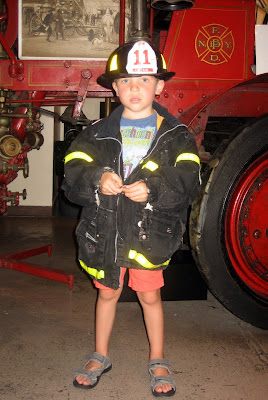
“Once upon a time a little lighthouse was built on a sharp point of the shore by the Hudson River. It was round and fat and red. It was fat and red and jolly. And it was VERY, VERY PROUD.”
-The Little Red Lighthouse and the Great Gray Bridge by Hildegarde H. Swift and Lynd Ward
Young children, often frustrated by how small and powerless they feel, will love the 1942 children’s classic, The Little Red Lighthouse and the Great Gray Bridge by Hildegarde H. Swift and Lynd Ward.
The book tells the tale of the Little Red Lighthouse, originally built in 1880 on New Jersey’s Sandy Hook to guide ships into New York Harbor. In 1917, the lighthouse was taken apart and put into storage, but in 1921, the United States Coast Guard moved it to its present spot, a rocky outcropping along the Hudson River in Manhattan called Jeffrey’s Hook.
Ten years after the Little Red Lighthouse was relocated, the George Washington Bridge (aka, the Great Gray Bridge) was constructed overhead and the lighthouse once again became obsolete. In 1951, as the Coast Guard made plans to dismantle the lighthouse, they started receiving protest letters from children who had read The Little Red Lighthouse and the Great Gray Bridge. The children’s campaign to save the lighthouse was successful and on July 23, 1951 (coincidentally, the same day we visited, 59 years later) it came under the jurisdiction of the New York City Department of Parks. Today, it is the southernmost lighthouse on the Hudson River and the only one located in Manhattan.
The Little Red Lighthouse, Riverside Drive at 181st Street, Fort Washington Park, Manhattan;, (212) 304-2365; Open the second Saturday of each month from May to October from 1:00 PM to 4:00 PM; Free; For more information about the lighthouse:
-Historic House Trust of New York City, (212) 360-8282; www.historichousetrust.org
-New York City Department of Parks and Recreation: http://www.nycgovparks.org/sub_about/parks_divisions/historic_houses/hh_little_red_light.html
Directions:
Take the A train to 181st Street.
From the corner of Fort Washington Avenue and West 181st Street, walk three blocks west to where 181st Street ends, at Riverside Drive.
Turn right at Riverside Drive and look for the footbridge across the West Side Highway.
Once you have entered the park at West 181st Street, follow the bike path into the wooded area of Fort Washington Park towards the George Washington Bridge.











































